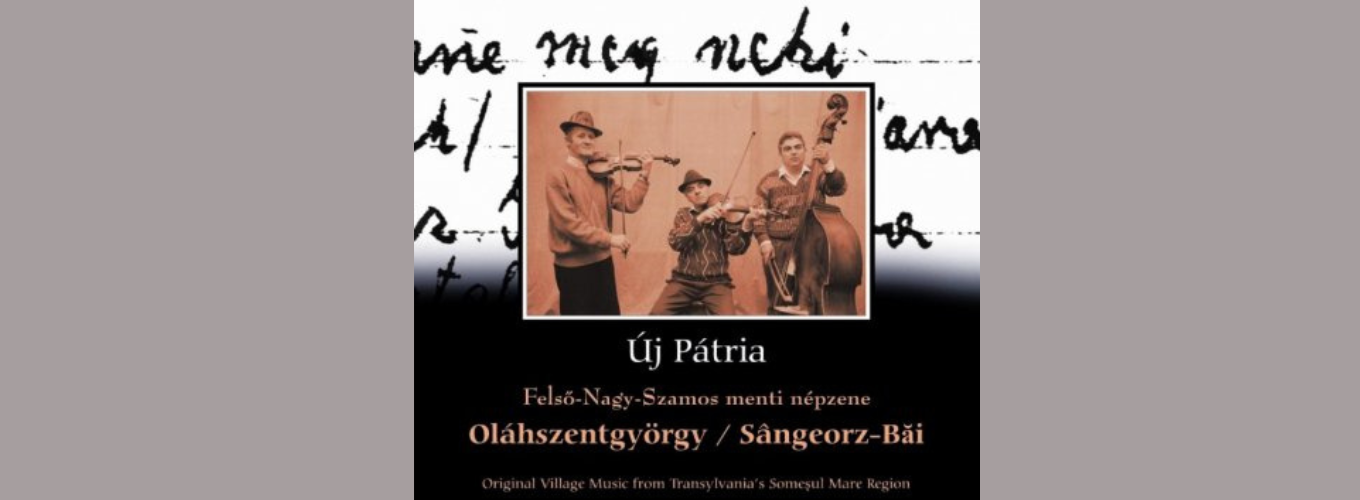
Oláhszentgyörgy - Original Village Music from Transylvania’s Someşul Mare Region - New Patria series
Our research in 1998 during the Final Hour project focused on the instrumental folk music and dance. We strived to make a complete inventory of the band’s repertoire and vocabulary of melodies related to the local dances and other customs.
The Oláhszentgyörgy musicians are members of the Poliac and Moldovan families; famous fiddlers came from both of these families. Until the beginning of the 20th century, the band had only violins, viola and small cymbalom.
The latter instrument was used until sometime between the two World Wars, since then the accordion has taken its place. Prior to WWI, the guitar was also used here – as in Maramureş. The double-bass has been used here since the 1930s.
1. De-a lungu, pe loc, învârtita (Cycle of couple dances) 8’ 55”
2. Legényes táncok: bărbunc rar, iute, mai repede (Men’s solo dances) 4’ 56”
3. Katonakísérő keserves (Soldier’s farewell lament) 2’ 31”
4. De strigat cătane 5’ 12”
5. Tropota 4’ 56”
6. De strigat la nuntă 2’ 57”
7. De-a lungu, pe loc, învârtita (first dance for the newlywed couple) 5’ 15”
8. Menyasszonytánc (Joc cu mireasa la bani) (Bride’s dance) 1’ 38”
9. Găina (Bringing the chicken) 0’ 42”
10. De strigat és lakodalmi hazakísérő marsok (Ending the wedding celebrations) 2’ 21”
11. Halottkísérő és „vers” (Funeral music) 3’ 44”
12. Pe loc, învârtita 4’ 58”
13. Învârtita 3’ 00”
14. Jocul banilor (Collecting money to pay the band) 2’ 39”
15. Jocul turcii (The goat dance) 0’ 44”
16. Pe loc, învârtita 12’48”
17. De strigat 2’ 47”
Összidő (Total time) 70’ 44”
Válogatta / Selected by: KONKOLY Elemér
ADATKÖZLŐK / PERFORMERS – INFORMANTS
Ionica MOLDOVAN (1944) – hegedű / violin
Ilie POLIAC (1949) – 3 húros brácsa, hegedű / 3 stringed viola, violin
Ioan ŞORECĂU (1942) – nagybőgő, furulya / double bass, flute